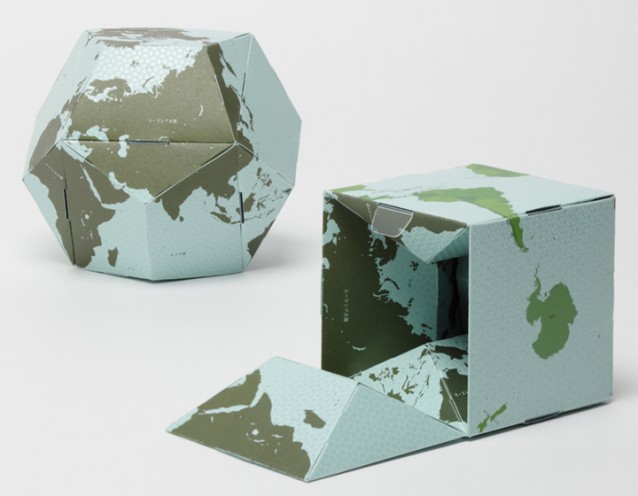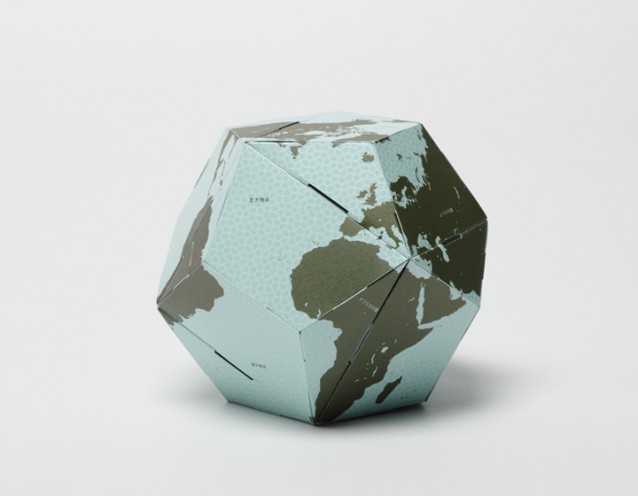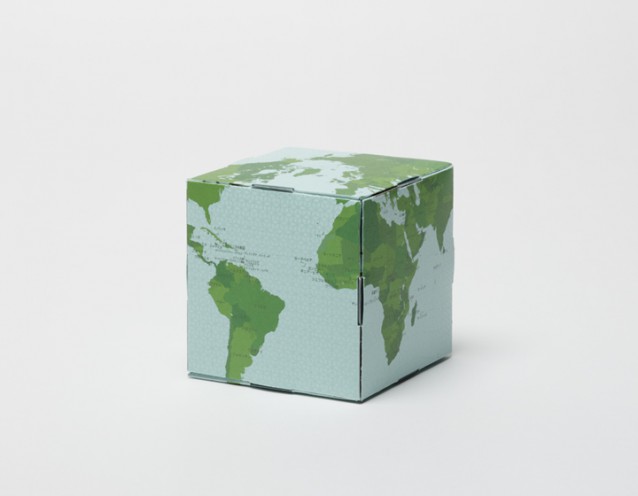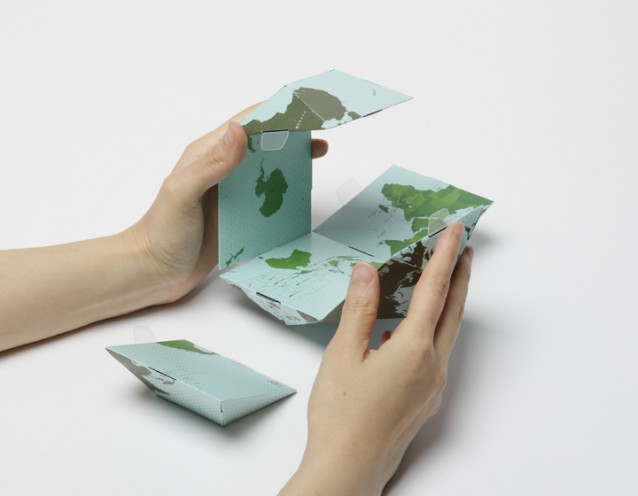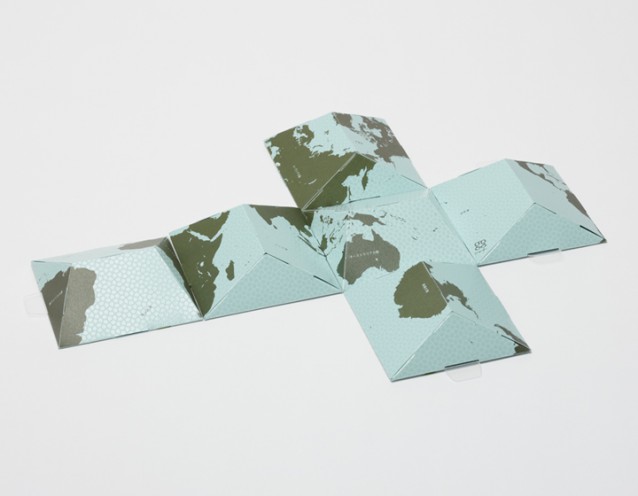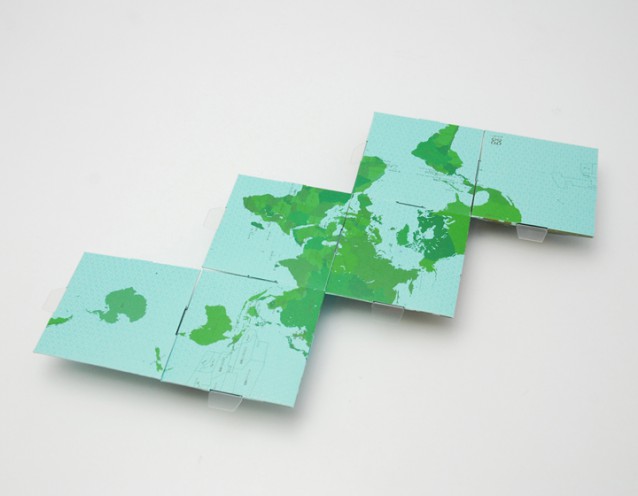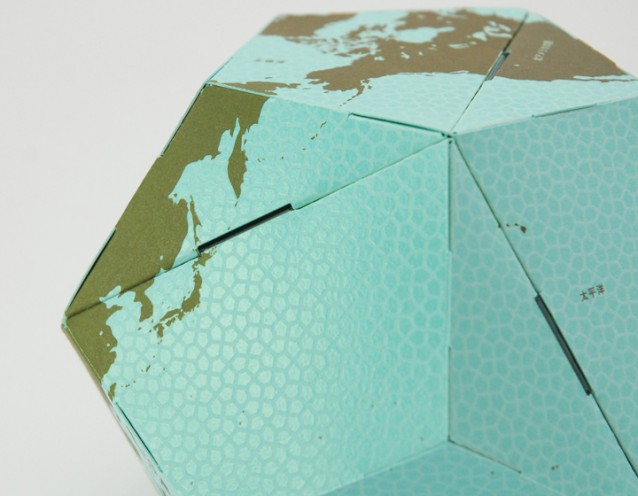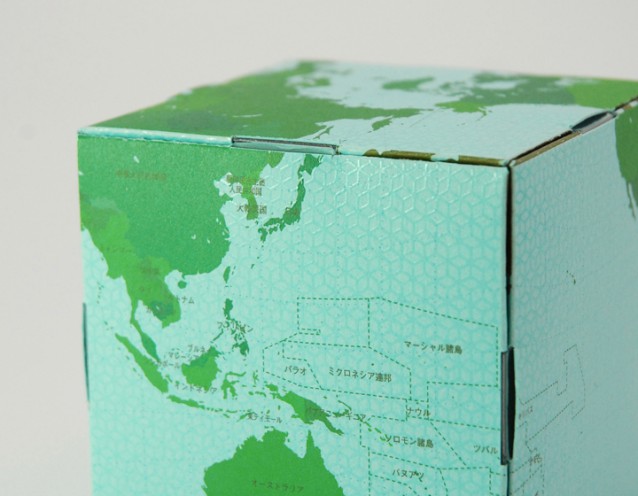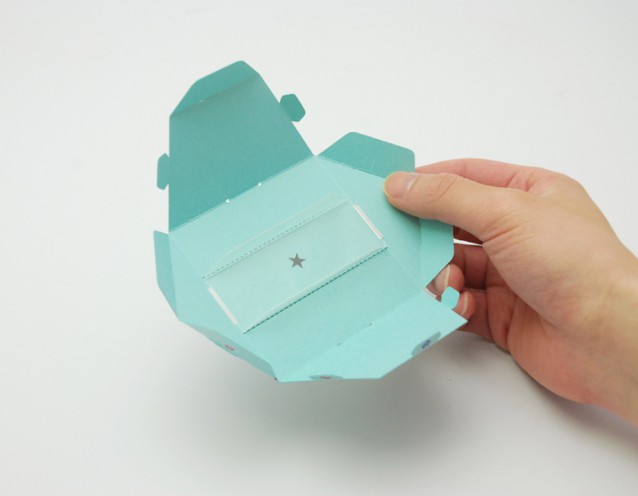[Product] flippable globe/cube in dodeca
You can assemble the globe without glue and tape. The reversible globe packs two faces of the world in one volume.
You can flip the surface of a dodecahedral globe inside out and transform to a cube by re-assembling six units.
type :assembly kit
size :140×140×140 / 80×80×80 (when finished)
price: 1800 jpy + tax
This paper globe is a product of geografia. Geografia is a product series that features geography, topography and the earth.
If you are interested in purchasing, contact us by email.
You can flip the surface of a dodecahedral globe inside out and transform to a cube by re-assembling six units.
type :assembly kit
size :140×140×140 / 80×80×80 (when finished)
price: 1800 jpy + tax
This paper globe is a product of geografia. Geografia is a product series that features geography, topography and the earth.
If you are interested in purchasing, contact us by email.
Two faces of the world packed in one globe.
The reversible globe shows both simple outline of lands on one side(dodecahedron) and complex political borders on the other side(cube).
PHOTO : Ryoukan Abe
The reversible globe shows both simple outline of lands on one side(dodecahedron) and complex political borders on the other side(cube).
PHOTO : Ryoukan Abe
Two faces of the world packed in one globe.
The reversible globe shows both simple outline of lands on one side(dodecahedron) and complex political borders on the other side(cube).
PHOTO : Ryoukan Abe
The reversible globe shows both simple outline of lands on one side(dodecahedron) and complex political borders on the other side(cube).
PHOTO : Ryoukan Abe
Two faces of the world packed in one globe.
The reversible globe shows both simple outline of lands on one side(dodecahedron) and complex political borders on the other side(cube).
PHOTO : Ryoukan Abe
The reversible globe shows both simple outline of lands on one side(dodecahedron) and complex political borders on the other side(cube).
PHOTO : Ryoukan Abe
You can flip the surface of the globe inside out and transform the globe's shape by re-assembling six units.
PHOTO : Ryoukan Abe
PHOTO : Ryoukan Abe
You can learn various developments of cube by breaking up the globe into six units.
PHOTO : Ryoukan Abe
PHOTO : Ryoukan Abe
You can learn various developments of cube by breaking up the globe into six units.
PHOTO : Ryoukan Abe
PHOTO : Ryoukan Abe
Geographical information is printed by off set printing. And glossy textures are printed by UV print.
A small pentagon composes the pattern of the texture on dodecahedron's face.
PHOTO : Ryoukan Abe
A small pentagon composes the pattern of the texture on dodecahedron's face.
PHOTO : Ryoukan Abe
A small rhombus composes the pattern of the texture on cube's face.
PHOTO : Ryoukan Abe
PHOTO : Ryoukan Abe
You need to place a plastic tab before folding paper along indicated lines. You need the tab to connect the units to construct the globe.
PHOTO : Ryoukan Abe
PHOTO : Ryoukan Abe

















